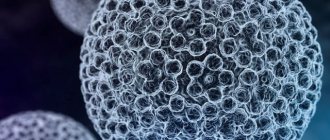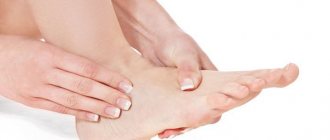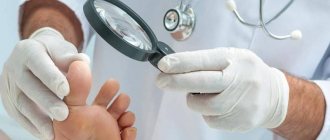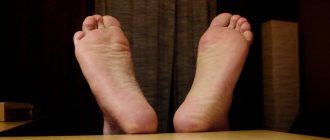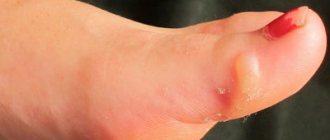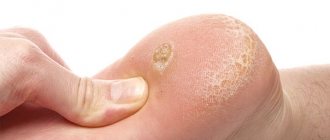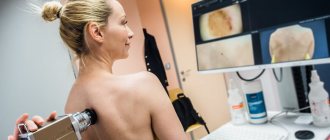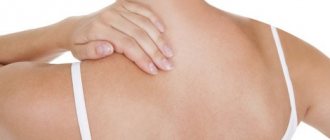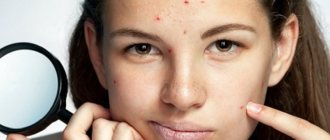Throughout a person’s life, feet experience enormous daily stress. It is not at all surprising that sooner or later a dry callus appears on the foot, which is a thickening of the stratum corneum of the epidermis and causes severe discomfort while walking.
This problem requires a timely solution, since over time it becomes more and more difficult to remove the callus.
Reasons for appearance
- wearing unsuitable shoes (hard, too tight or roomy, with an uncomfortable last, with heels that are too high and thin);
- overweight;
- frequent carrying of heavy objects;
- Tendency of the skin to increased keratinization. This is an individual feature of the body that does not depend on mechanical factors;
- flat feet, which often cause calluses on the soles;
- diseases in which the skin is overly susceptible to external influences (diabetes mellitus, metabolic disorders, psoriasis, rheumatoid arthritis, gastrointestinal dysfunction);
- fungal infections;
- increased sweating and sensitivity of the skin;
- lack of vitamin A.
If the formation of calluses on the foot is not only the result of external influences, then complex treatment is necessary. It should include measures for the general health of the body.
Medications for removing calluses
Pharmacological preparations based on “light” acids effectively soften dry calluses, after which they can be easily removed.
Salicylic, lactic acid
Preparations based on salicylic acid:
- Salicylic ointment
- Collomak
- Nezosol
- Agave
- Callus
The above drugs are available in the form of a cream or ointment, which makes their local use convenient. The product is applied to problem areas and fixed for a certain time. Afterwards, the softened skin is removed.
Note! Callus removers should not be applied to chapped skin or healthy areas. This can lead to chemical burns, the formation of non-healing wounds, and erysipelas.
The pharmaceutical industry offers a Salipod patch, which can be cut to the size of the formation and fixed. After a few days, the callus will come off along with the patch. for old formations, the procedure should be repeated several times.
A drug based on lactic acid – Super Antimozolin. It works in a similar way.
Alkali-based preparations
The pharmaceutical product Superpurity has nothing in common with the herb of the same name. The drug is a mixture of caustic alkalis of sodium and potassium, it is very aggressive and requires special care when used. Removes dry calluses effectively. Using an applicator, apply a drop of the product to the keratinized skin, steam it in water and remove the softened callus.
Antipapillom gel is safer. It is applied pointwise until the formation is completely removed.
Phenol-based preparations
The drugs Condilin and Verrukacid are positioned as means for removing papillomas. However, their necrotizing properties are excellent for removing dry calluses and calluses with a core. Medicines should be applied with the obligatory protection of healthy skin, which is problematic to do on your own on the inside of the toes. An assistant will be needed here.
Condylin or Verrucacid is applied to the formation several times until completely dry. Treatment is repeated until the keratinized skin or callus core disappears.
Treatment with home remedies
Home remedies to remove dry calluses include:
- Solutions of malic and acetic acids. Their action is similar to salicylic acid preparations
- Grated garlic. The paste is applied to the callus and left overnight. The method is more suitable for removing corns on the feet. It is difficult to secure the bandage accurately on the fingers. You can burn healthy skin
- Vegetable oil. Used to soften keratinized areas. For the same purpose, you can apply slices of lard at night.
- Steaming your feet in a soda bath to soften and gradually remove calluses.
Note! It is strictly forbidden to cut the callus with a blade, which is often practiced. Cutting the skin leads to a change in the skin pattern, and the callus grows inward, forming a core that is very difficult to remove.
Removal in a clinic
You can remove dry callus by contacting the clinic. Here will be held:
- Medical pedicure, which will remove all dead skin
- Laser evaporation of calluses. Gradually, layer by layer, the formation is evaporated, leaving no trace of the rod. The procedure is painless and does not require prior preparation.
- Cryotherapy – removal with liquid nitrogen. The keratinized tissue is frozen until completely removed.
Note! Hardware removal of dry calluses is an effective and safe procedure that can be performed both in a medical facility and in a cosmetology clinic. However, without eliminating the cause of callus formation, relapse is inevitable.
Types of calluses
To know how to remove calluses on the foot, you need to determine what type of growth it is.
- Soft wound (dropsy). It appears in the form of a bubble with liquid - lymph, which protects the epidermis from further damage. If the capillary vessels are located near the surface of the skin and have been subjected to significant pressure, there will be particles of blood in the lymph (blood blisters);
- Dry callus on the foot (corns). This is a hard lump that protrudes above the skin. It looks like a yellowish spot. It has a root that goes deep. Because of this, when walking, constant friction appears inside the foot and the corn grows. The growth usually does not hurt. A variety is a callus with a rod. It is formed when a foreign body (splinter), dirt or infection gets into the skin. In addition to aesthetic inconveniences, a person experiences pain because the root touches the nerves.
Hardware removal methods
When it is not possible to get rid of dry formations on the skin using pharmaceutical means, you should turn to instrumental methods.
Hardware pedicure
This procedure allows you to remove exclusively dead cells of the epidermis without affecting healthy tissue at all. If necessary, correction of the nail plates is carried out.
An effective treatment for dry calluses, it allows you to get rid of formations in one procedure. In the future, it is recommended to wear silicone protectors, regularly use moisturizers and treat the feet with pumice stones at least once a week.
Cryodestruction
It is based on the effect of a low-temperature environment on a pathological formation, resulting in a thermal burn followed by tissue necrosis.
The procedure uses liquid nitrogen, which is applied pointwise to the callus with a special tip or cotton swab. As a result, the cells freeze with further destruction.
Healthy tissues are not damaged. Usually one session is enough to completely remove the callus.
The advantages of cryodestruction include:
- speed of implementation;
- no age restrictions;
- painlessness;
- absence of bleeding and infection during the procedure.
There will be a long healing period after the procedure, requiring proper care.
Laser Application
A high-tech and most gentle method for removing all types of dry calluses. It does not cause pain, guarantees the absence of relapses and complications, and does not require a lot of time for recovery.
During the procedure, a carbon dioxide or erbium laser is used: the first allows layer-by-layer burning of pathological tissue, the second removes them through evaporation.
At the same time, the laser beam kills all pathogens, preventing the development of inflammatory processes. In addition, it cauterizes blood vessels, preventing the development of complications.
Important! Before undertaking any of the above procedures, you should consult with an experienced professional. The doctor will be able to evaluate all the indications and contraindications, after which he will advise the most suitable and effective method.
Stages of development
- hyperemia (redness) of the affected area, burning sensation;
- formation of soft (water) callus;
- Formation of dry callus. It appears if a person does not know how to treat dropsy and simply covers it with a band-aid. The skin dries to the wound and new, keratinized layers of the epidermis begin to appear.
Treatment of calluses is necessary, as over time they will contribute to the appearance of cracks. It is likely that pathogenic bacteria will enter there and cause fungal diseases.
What to do if inflammation occurs?
If an inflammatory process develops in the area where the callus is located, it is necessary to consult a doctor as soon as possible. To remove pus, which usually accumulates inside the tissues, ointments are used - Ichthyol or Vishnevsky. After eliminating the inflammatory process, healing and restorative agents are prescribed.
During the treatment period, it is necessary to provide comfort to your feet and eliminate all irritating factors by changing to high-quality and comfortable shoes.
Treatment methods for water callus
Since there is a high risk of infection, you need to know how to properly remove a water callus on your foot. There are certain rules.
It is not advisable to damage the blisters as they protect the skin. The bladder should be washed with clean water and protected from injury. You can lubricate the blister with tomato juice or apply a plantain leaf. Then a bactericidal patch is applied to the sore, which does not block the access of air.
If the bubble is already too large and interferes with walking, then it must be opened. Before treating calluses on the feet, the affected area and hands must be treated with an antiseptic (chlorhexidine, miramistin, furatsilin, etc.). A thin needle is also treated with an antiseptic or calcined over a fire.
The puncture is made at the edge of the bubble; do not pierce it vertically and in the middle. The needle is inserted at an angle. If the blister is very large, make several punctures. The liquid is then carefully squeezed out. Try not to damage the upper delicate skin.
It promotes regeneration and prevents infection. Blot the sore with a cotton or gauze swab.
The affected area is treated with an antiseptic and a bactericidal patch is applied. You can fold a piece of gauze into several layers, apply it to the wound and secure it with a regular bandage. You need to wear more comfortable shoes.
If you do not need to leave the house, you do not need to apply protection. The wound will heal faster if air flows freely. It is recommended to lubricate the callus on the foot with drying salicylic or syntomycin ointment or levomekol.
Patients with diabetes mellitus and hypotension are recommended to consult a doctor before self-piercing the bladder.
Providing medical care
It is possible for infection to enter the wound. Do not delay seeing a doctor if:
- there is severe swelling, the affected area is red;
- there is a sharp, twitching pain;
- there was a change in the color of the liquid inside the sore;
- there is pus;
- the area around the sore spot is hot to the touch.
At the hospital, the wound will be treated, a bandage will be applied, and recommendations will be given on how to properly get rid of calluses on your feet.
Home Remedies
Traditional medicine offers many methods to cure wet calluses on the foot. To get rid of aching pain and speed up skin healing, the following remedies are recommended:
- Salt bath. In 1 liter of heated water you need to dissolve 1 tbsp. l. table salt. It is enough to hold the foot for 3-5 minutes;
- A bath where potassium permanganate is added. Dissolve the grains in heated water to obtain a pale pink solution. Hold your foot for 5-7 minutes;
- Take chamomile or calendula flowers. 2 tsp. dry flowers, pour a liter of boiling water. Wait until the infusion becomes warm, strain. The procedure lasts 10-15 minutes. Calendula and chamomile have a bactericidal effect, dry the skin and therefore calluses on the soles heal quickly. The bath relieves pain;
- Raw potatoes relieve pain well. The paste from it should be applied to the wound, covered with a piece of bandage folded in several layers and secured. Change the compress on the wound every 2-3 hours;
- Fresh plantain leaves should be washed, crushed into a paste and a compress applied twice a day. Also helps relieve pain.
What not to do
Dermatologists do not recommend using pumice . It can only worsen the situation, as it contributes to additional trauma to the skin.
Be sure to read:
How errors in diet affect the skin, prevention of skin diseases
You cannot cut off the skin on your fingers , especially if you have problems with the circulatory system.
Doctors advise immediately getting rid of uncomfortable shoes that caused the appearance of corns.
During treatment, you should wear only comfortable shoes or sneakers with orthopedic insoles. After recovery, the patient must carefully choose his shoes.
How to get rid of peeling skin on the palms of your hands? Read the link.
Treatment methods for corns
Treatment by a doctor
It is necessary to consult a dermatologist who will tell you how to treat the growth and prescribe the most suitable treatment method. It could be:
- Cryodestruction - freezing the growth with liquid nitrogen. The procedure is virtually painless, takes about two minutes and leads to good results. Necrosis (death) of callus tissue on the feet occurs. Then healthy skin grows. The process occurs gradually, over 7-10 days, so infection is excluded during healing. No scars are formed;
- Electrocoagulation is the cauterization of a corn with an electric current. Disadvantage of the method: if cauterization is too deep, scars may form on the skin. If insufficient, the compaction will appear again;
- Treatment of seals using the Surgitron device. Calluses on the feet are excised using a radio wave scalpel. It dries out the moisture in the corn tissue. The procedure is almost painless, no scars are formed, and the wound does not become infected;
- You can treat calluses on your feet with a laser. It is believed that this is the most optimal modern method. The laser completely destroys keratinized tissue. After three days, healthy skin grows. One procedure is enough, no scars appear, and there is no danger of wound infection. The disadvantages of the method include some pain (performed under local anesthesia) and high cost.
All of the above methods should be performed only in medical institutions that are licensed to perform such procedures. Calluses cannot be removed in regular beauty salons.
Home methods
The recovery process is quite long and not always effective. But if for some reason you are unable to see a doctor, try the following recipes:
- Anti-callus patches with salicylic acid. You can apply it overnight, then steam your feet and try to clean off the rough skin with pumice;
- If the growth has recently appeared, baths containing soda, salt, apple cider vinegar or tea tree oil will help. You can combine them with the use of medicinal gels and ointments, which are sold in pharmacies;
- A mixture of raw onion is applied to the sore, covered with a bandage on top, and secured. Keep the bandage on your leg for several hours. It will take 10 sessions. Then you need to make a foot bath and carefully remove the peeled skin;
- Aloe sprigs must be placed in the refrigerator for three days to obtain sufficient juice. They need to wipe the calluses on their feet twice a day;
- Raw potato gruel is applied to the keratinization. The foot is wrapped in film and woolen socks are put on top. The compress lasts for 8 hours, then the mixture is washed off;
- The whey should be heated in a water bath, keep the compress for 30-40 minutes;
- Castor oil and glycerin are mixed in equal parts and applied to the seal. The leg should be wrapped in film, a woolen sock should be put on top, and the bandage should be kept on for 10 hours;
- The onion should be soaked for two days in table vinegar. Then take it apart into layers and apply it to the corns. Wrap with film and keep for 6-8 hours;
- A clove of baked garlic is crushed and applied to the growth. The area around the sore should be lubricated with sunflower oil. Keep the bandage on for 8-10 hours. Course – 7-10 procedures;
- Lemon will help remove calluses on the soles. Steam and dry your feet properly. A slice of lemon along with the peel should be applied to the keratinization, fix, and keep the compress for 8 hours. 5-7 procedures are enough;
- Tomatoes must be peeled, grated, and boiled for 5 minutes. Apply the compress to the seal for 2 hours;
- Spruce or pine resin is applied to the seal. The sole is wrapped with film, keep the compress for 8-10 hours.
Drug therapy
The very first step in the treatment of dry calluses is to eliminate the factor that caused their formation. It is necessary to avoid any pressure on the sore spot. You need to change your shoes to more comfortable and practical ones. It is important that the pair fits properly, is made from natural materials and has no heels.
To reduce friction and pressure, you can make your own special protective lining. To do this, you need to take a piece of thick and soft fabric and cut a circle out of it, then make a hole in its center that is suitable for the size of the callus. It is necessary to apply the finished lining directly to the formation.
To remove calluses, you can use medications from the pharmacy.
Crema
The following are in demand:
- Agave;
- Doctor;
- Mozolin.
The above compositions are easy to use, easy to apply and quickly absorbed. Better penetration of the cream will be facilitated by a warm bath with ammonia or soda, in which the feet should be kept for 5 - 10 minutes. Afterwards you need to treat the skin with pumice.
Apply a small amount of the product to the compacted callus tissue, rub in thoroughly and put cotton socks on your feet.
It is best to carry out this procedure at night. To obtain maximum results, use the cream daily until the skin softens. After this, the callus can be removed.
Ointments
Popular remedies for dry calluses. They usually contain salicylic acid. Additional components are vegetable oils.
Before using the product directly, you need to steam your feet in a bath with soda and salt, then treat them with pumice, apply the ointment in a circular massage motion and put on socks on top.
Use daily until the callus is completely removed. The most popular ointments are Super Antimozolin and Bensalitin.
Plasters
Pharmacies sell a large number of special patches for dry calluses. The products fasten well, do not allow liquid to pass through, protect against pressure and help fight bacteria.
They contain a medicinal composition that makes it possible to soften the formation and then remove it. The base is usually salicylic acid with sulfur. Examples include adhesive plasters Compid, Salipod, Leiko.
Any of the listed remedies can be used at home and will be quite effective if treatment is started in a timely manner.
Prevention
In order not to be tormented by the question of how to remove calluses on your feet, you must follow the following rules:
- Shoes should be comfortable, of the right size, high-quality material, and the seams should not be rough. No matter how much you like the shoes, don’t buy them “to sell out.” It’s easier than thinking about treating your feet in the future.
- You must wear socks under closed shoes. Socks, knee socks, tights should be made of natural material. Choose them by size to avoid wrinkles that rub your feet;
- If you play sports, you need to purchase special sports shoes, socks, and tights. In their production, high-quality natural materials are used; they do not have rough seams;
- do not wear high heels every day;
- remember about daily hygiene and cosmetic care;
- buy special orthopedic and sanitary pads for shoes that reduce friction and stress on the feet;
- if your feet sweat a lot, use talc, special powders or anti-chafing pencils.
Follow all the recommendations and you will be able to boast of beautiful, soft and well-groomed legs!
Tags: warts, callus, heel, foot, ankle About the author: Andrey Stepanovich
« Previous entry
Development of calluses with a core
First, as a result of the long-term action of one or several pathological factors, wet calluses form on damaged areas of the skin with their gradual transformation into dry calluses, which, if treated incorrectly or untimely, begin to grow deep into the tissue and transform into internal or core calluses.
These formations are difficult to treat, and problems of an aesthetic nature are complemented by severe pain when walking, which changes gait, leading to improper load on the knee, ankle and small joints of the foot (depending on the location of the callus), which leads to the development of inflammatory and degenerative diseases in them. processes (arthrosis and arthritis). Also, these painful formations have a tendency to periodic inflammation, so they need timely and adequate treatment.
The process of getting rid of calluses often takes a long time, but the only way to cure them is to completely remove them using various methods.
Note!
You cannot cut the callus with scissors or a razor. She needs to be treated!
If, after using steam baths, you plan to apply ointments or pastes from folk remedies to the callus, you should not clean your heel with a pumice stone.
You need to get rid of calluses as soon as you find them. The larger the callus, the more difficult it is to cure it later. It is also possible to experience pain and discomfort when walking.
Until the callus is cured, avoid uncomfortable, hard shoes, use a patch before going out, and try to reduce the load on the damaged heel.
You can also remove dry calluses in a beauty salon using a pedicure machine.
How to recognize a dry callus
It is very difficult to confuse a dry callus with something else. An area of keratinized skin that is not sensitive to pressure on it does not have lymph inside. Discomfort when walking and mild pain are possible in the initial stages of callus formation. After the skin layer thickens, the pain disappears, but just at this moment an unpleasant “surprise” can occur. Dry calluses, if not addressed in time, take root deep into the skin.
Treatment of dry growth can be lengthy and complex. It is better to remove such a callus with a core, because it becomes chronic, and microorganisms that have entered the inner layers of the skin cause inflammation, which can lead not only to redness and severe pain, but also the release of ichor and, in some cases, blood. Due to the physiological structure of the foot, a dry callus with a shaft often appears on the third, fourth toe or between them.
Preventive measures
To avoid such a problem as the appearance of calluses, it is necessary to follow the recommendations of dermatologists and cosmetologists for foot care. Expert advice boils down to the following:
- select shoes strictly in size and from high-quality material;
- do not spend many hours in high-heeled shoes;
- maintain foot hygiene, use talcum powder;
- choose socks of the appropriate size;
- rub the edge of narrow shoes in the area of the little toe with vinegar, soap or a special dressing;
- do not wear a new pair for long distance walking;
- Just in case, have a bactericidal patch with you.
If even small dry growths appear on the skin, you should get rid of them in a timely manner, preventing the formations from growing. You should not miss the moment and allow a small nuisance to develop into a big problem.
